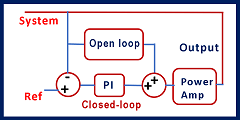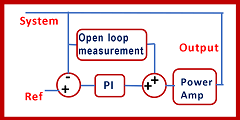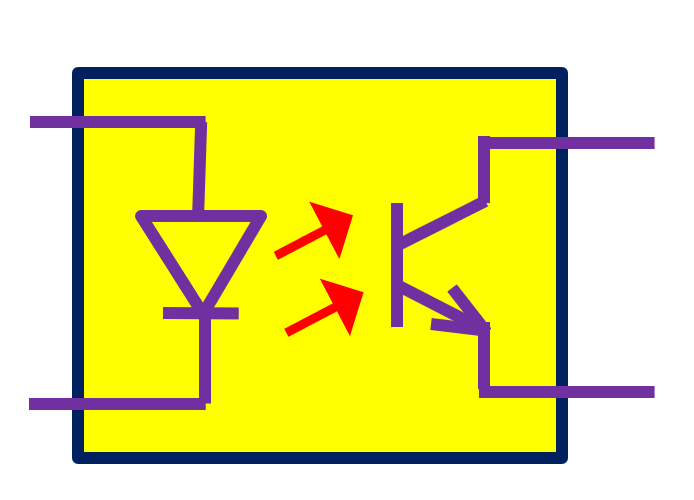In this article, I explain the nine differences between open-loop control and closed-loop control systems. The hybrid control system (open-loop and closed-loop control together) is also explained.
Differences between closed-loop and open-loop control
There are many differences between open-loop and closed-loop control systems in parameters like speed, accuracy, cost, and complexity.
The nine differences between closed-loop control and open-loop control systems are as follows:
- Open-loop control is fast, but closed-loop control is slow.
- Open-loop control is less accurate as compared to closed-loop control.
- Further, Open-loop control is more affected by a disturbance in the system, The closed-loop control is less affected by a disturbance in the power system.
- Open-loop control does not require a transducer for feedback, closed-loop control systems require transducers to measure output parameters.
- The calibration of the open-loop system is difficult as compared to the closed-loop control system.
- The open-loop control system does not require feedback, while closed-loop control requires feedback.
- Very high expertise is required for high accuracy for high-accuracy open-loop control systems. The closed-loop control system is quite simple many times.
- The cost of an open loop control system is more for high accuracy.
- Further, The design of a highly accurate open-loop control system is quite complex. It is easier to design a closed-loop-control system for high accuracy.
Examples of open loop control system
A few examples of low-accuracy open-loop control systems or feed-forward control systems are:
- Triac or other control for fan speed
- Washing machine motor
- Speed control in scooter and car
Further, a few examples of high-accuracy open-loop control systems are:
- Traction control for the engine
- Industrial control
Closed-loop control examples
A few examples of closed-loop controls are:
- Airplane
- Traction motor in train engine
- Washing machine – water level
- Car speed along with human observation
- Defense missiles and anti-missile system
Further, refer the Figure 1 for a simple block diagram of the open-loop control and close-loop-closed-loop control system block diagram.

Extra knowledge as per experience
we use both the open-loop and closed-loop control philosophy in many complex control systems to achieve speed and accuracy. We may call it a hybrid control system.
Many a time there may be many closed-loop control in a single system. In one of my projects on the unbalanced control system. I used a total of nine closed-loop controls in the single control system along with 3 open-loop control systems together as per Ref Figure 2.

Figure 2 shows the difference between open and closed-loop control together in a system. The measurement block in Fig 2 is the open control loop. Observe that there is no PI function for this open control system.
Further, a few of you may think that no feedback loop is shown in PI control. But it is very much there. The system bus at the top behaves like a feedback loop.
This block is made for power system applications.
Further, any change in the output is reflected in the system and measured by the control system.
We have to predict the output required in the measurement block as per system requirement conditions. This requires a detailed knowledge of the system under consideration.
The unbalanced control, hardware limitation, and even harmonics stability control were the reasons for using many closed-loop in a single system.
In the traction control for the train engine, both types of control systems are used.
I hope that you enjoyed reading an article on the differences between open and closed-loop control systems.
If so, then subscribe to my YouTube channel.
For a detailed understanding, watch the video:
Further, read on the use of ct transformer with open secondary winding.
Also, read DC or AC which is more dangerous.
Further, Continue reading CT and PT transformer differences.
Continue reading What is MOV varistor and its use.
Article on Which motor used in the train Engine.
Also, read what is ungrounded electrical system.
About the author – G K Agrawal B.Sc and B.Tech (from HBTU Kanpur), Retd. Sr DGM Design (BHEL), the inventor of patents, has lifelong industry experience in the electrical and electronics design field of R&D. He worked for BHEL. He shares his experience and knowledge on blogs and YouTube. Read the profile here.



Very good
I have been browsing on-line more than 3 hours lately, but I never discovered any fascinating article like yours. It is beautiful worth enough for me. Personally, if all web owners and bloggers made excellent content material as you probably did, the web will likely be much more useful than ever before. “Dreams have as much influence as actions.” by Stephane Mallarme.
thanks for the comments.